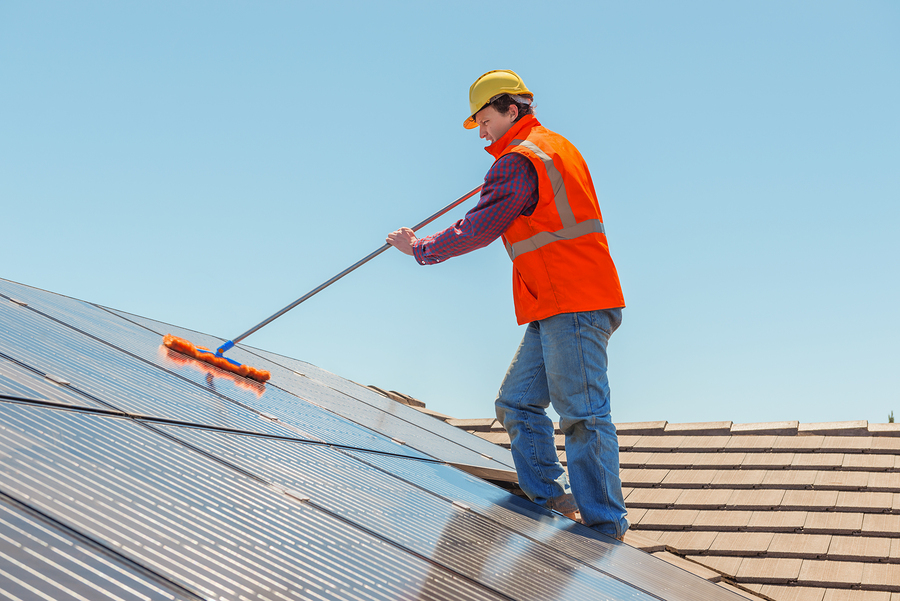The issue of sustainability has crept into conversations about topics ranging from agriculture to home goods. The construction industry has shifted toward the search for sustainable materials and practices, but it also is moving away from demolition projects and toward restoration efforts. Instead of tearing down older buildings, construction companies are rehabbing and renovating them for centuries more use.
Sustainable Materials

Solar roofs offer just one example of sustainable materials in the construction industry.
Construction firms are fitting homes with solar roofs and installing bamboo floors in place of hardwood. Many construction professionals are counseling homeowners and commercial real estate developers about sustainable practices.
The green building market in the United States is worth $85 billion, whether contractors are building new construction or saving older structures. Both contractors and customers want to conserve energy, use renewable resources, and protect the environment.
In some cases, sustainable materials cost more than less green alternatives. However, both industry professionals and end users must consider the total cost of ownership (TCO) for a project. The materials might cost more, but the consumer saves money in the long run thanks to reduced energy costs and other benefits.
Rebuilding
If an older building needs upgraded plumbing or electrical wiring, the entire structure needn’t come down. The sustainability movement in construction has inspired contractors to save buildings whenever possible. They no longer demolish buildings as a first resort.
Unless a building exhibits signs of imminent structural failure, renovation projects can usually save it. Using sustainable materials and up-to-date technology, contractors can change the layout, function, and infrastructure of a building without tearing it down and starting from scratch.
Not only does renovation save the time, expense, and effort required to tear it down, but it also preserves history. The cultural and historical benefits far outweigh the downsides.
Some homes and buildings destined for demolition are perfectly salvageable. Finding alternative uses for buildings gives them infinite purpose and reduces the TCO.
Population
Between 2015 and 2050, experts estimate that the United States population will increase by nearly 80 million people. Homes and businesses must accommodate that dramatic population growth without consuming too many finite resources.
When contractors preserve existing buildings, they can focus their efforts on building new structures on unoccupied property. The overall square footage of building availability grows, but without the time delays associated with demolition.
Plus, adaptable buildings can increase in square footage. Contractors can add new floors above existing ones or expand the building’s footprint. Space utilization is particularly important in dense cities, such as New York City, but it matters in every United States metropolis.
Waste
Sustainable construction also reduces waste. Instead of tearing down a building and disposing of its structural materials, contractors revitalize an existing building and drastically reduce their waste output.
With landfill space at a premium and natural resources in jeopardy of depletion, it’s essential to preserve as many raw materials as possible. Rebuilding a structure offers that opportunity, whereas demolition increases waste.
If you’re interested in contributing to sustainable practices in construction, start your course now and begin your career as a contractor.
